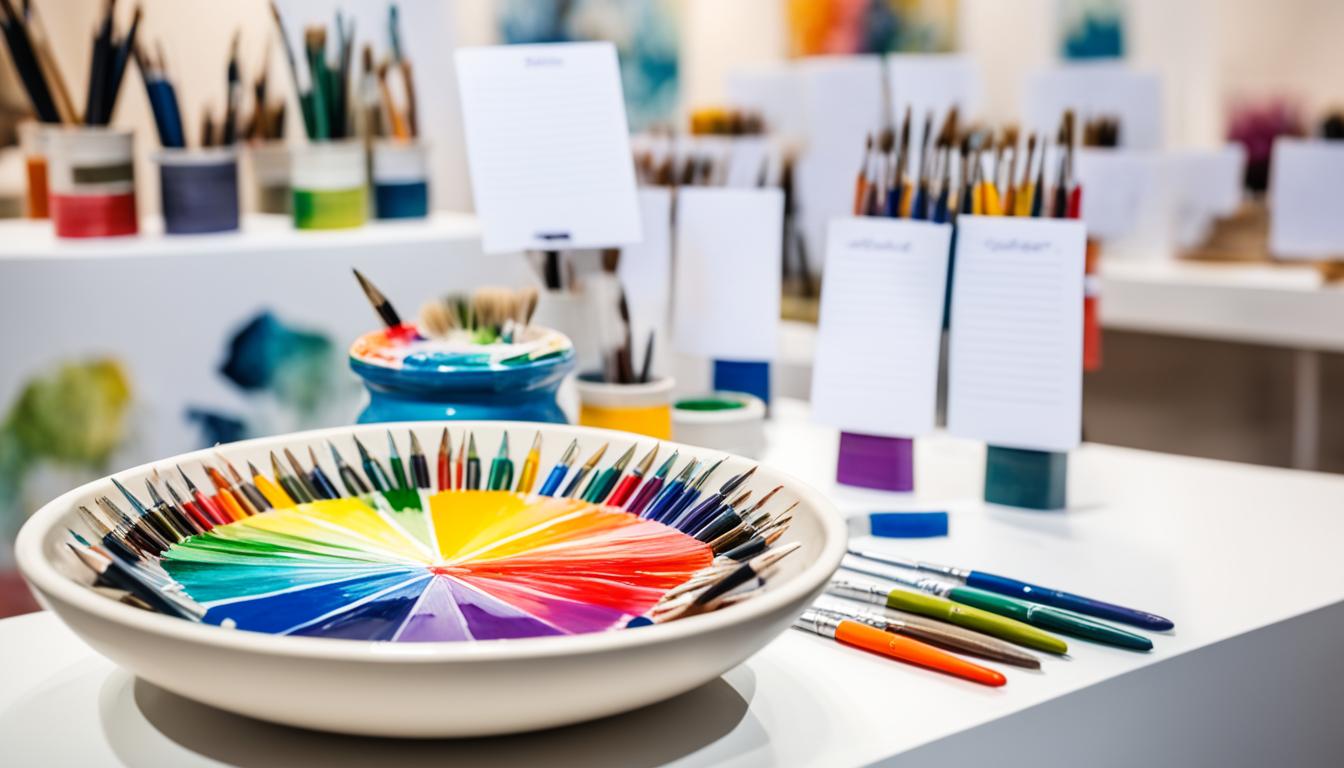Have you ever stood in front of a stunning piece of ceramic art and felt a wave of emotions wash over you? Maybe it was the intricate details of a vase or the raw beauty of a hand-thrown bowl. Art, particularly ceramics, can evoke powerful connections that resonate deeply within us. Learning how to write art appreciation in ceramics allows you to articulate these feelings and share them with others. This guide seeks to equip you with the insights and strategies needed for insightful ceramic artwork analysis and meaningful ceramic art criticism. You’ll discover the historical significance of ceramics, how its artistry has influenced culture and society over the ages, and why understanding the elements of art and principles of design is crucial in your writing journey. Join us on this exploration as we delve into the world of ceramics and unlock the profound beauty that lies within.
Key Takeaways
- Art appreciation involves a complete understanding of elements and principles used in ceramics.
- This guide outlines 13 steps for writing about art appreciation in ceramics.
- Understand the 6 elements of art: line, shape, form, space, color, and texture.
- Learn about 8 principles of design: balance, emphasis, movement, pattern, repetition, proportion, variety, and unity.
- Suggested proximity for examining ceramic pieces: about 6 feet away and then 2 feet away for detail.
The Importance of Art Appreciation in Ceramics
Art appreciation plays a crucial role in your understanding of ceramic works. This educational approach encourages you to engage with the intricate design elements present in ceramics, enhancing both perception and enjoyment. Without a solid foundation in art appreciation, your experience may remain superficial, limiting your ability to connect meaningfully with the artwork.
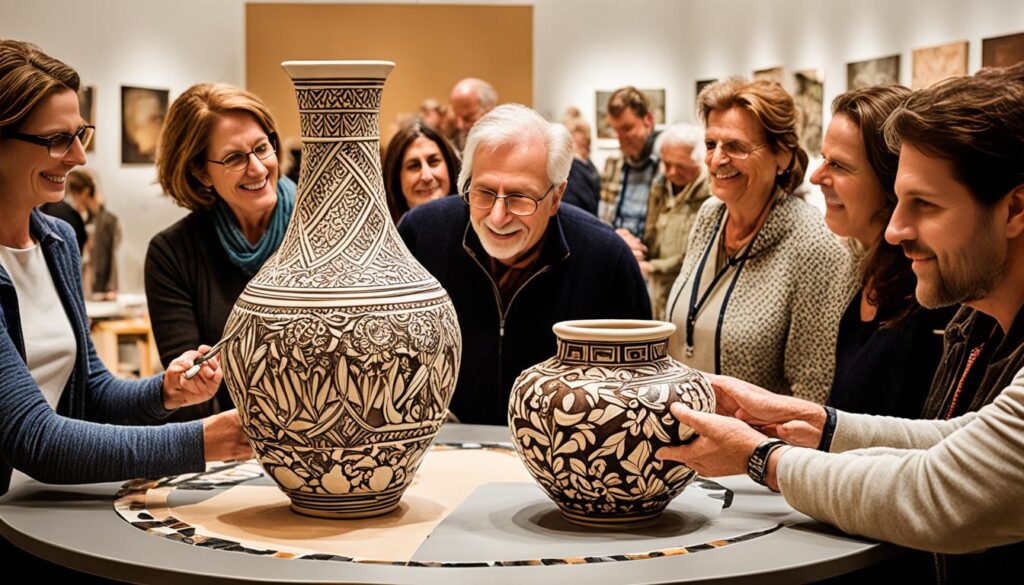
Effective art appreciation programs actively involve you in the learning process, allowing the development of necessary skills. Cultivating perceptual skills and expanding your vocabulary can greatly enhance your ability to respond intelligently to art. As such, an awareness of different artistic styles and movements, such as Realism, Impressionism, and Abstract art, becomes essential.
- Realism: This movement emerged in the 19th century as a response to Romanticism, focusing on portraying everyday life accurately.
- Impressionism: Known for its visible brushstrokes and vibrant light, this style captures fleeting moments in time.
- Fauvism: Characterized by bold, non-naturalistic colors, it pushes boundaries in color use.
- Cubism: Pioneered by Picasso and Braque, this movement challenges traditional perspectives of representation.
- Surrealism: This style aims to explore the unconscious, relying on emotional and irrational imagery.
- Abstract Art: It diverts from recognizable forms to examine colors and shapes critically.
- Pop Art: This genre embraces popular culture, reflecting its influences on society.
- Minimalism: Focuses on simplicity, utilizing geometric shapes and limited color schemes.
- Conceptual Art: Prioritizes the idea behind art over aesthetic elements, encouraging you to think critically.
By actively engaging in art appreciation, you can enhance your visual literacy. Incorporating writing as a tool for understanding ceramic aesthetics allows you to express your observations and responses more clearly. Engaging in written reflections not only improves your verbal skills but also fosters a deeper appreciation for the nuances of ceramics.
Ultimately, recognizing the importance of art appreciation in ceramics empowers you to share your aesthetic experiences and insights, enriching both your understanding and that of others.
Understanding Ceramic Aesthetics
Exploring the beauty of ceramics involves delving into the elements of aesthetics in ceramics, which encompass numerous characteristics that define the appeal of ceramic artworks. Appreciating these aesthetic qualities can elevate your understanding of how design choices impact both functional and decorative ceramics. These elements play a crucial role in how audiences experience and connect with a piece, influencing decisions in the art market and personal collections.
The Elements of Aesthetics in Ceramics
The elements of aesthetics in ceramics include form, texture, color, and narrative. Each of these characteristics brings a unique dimension to ceramic work:
- Form: The shape of a ceramic piece can evoke different feelings and experiences. Designers often experiment with curves, angles, and proportions, aiming to create harmony and balance.
- Texture: Tactile qualities enrich the visual experience. A piece may feature smooth surfaces or intricate patterns that invite touch, enhancing its appeal further.
- Color: The palette chosen by the artist significantly affects perception. Bold colors can make a statement, while subtle hues may evoke tranquility and serenity.
- Narrative: Each piece tells a story, whether through its design elements or the context in which it is presented. This narrative can connect with cultural significance, enriching the viewer’s experience.
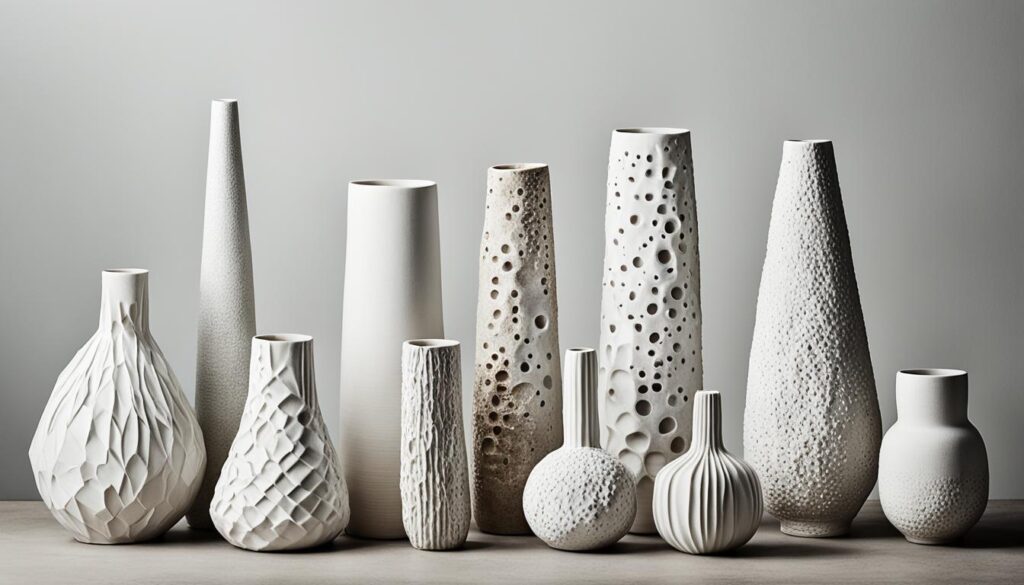
Cultural Significance of Ceramics in Art History
Throughout art history, ceramics have served as a medium that reflects cultural values and artistic evolution. From ancient Mesopotamian designs to contemporary practices, you can trace the lineage of ceramic aesthetics to understand its impact on society. Various techniques have emerged, adapting to changing tastes and technologies. Historical ceramics often showcased the artistry and craftsmanship of their creators, illustrating how cultural identity shapes aesthetic preferences.
Current trends in ceramic consumption further highlight the importance of aesthetic appeal. Statistical analysis shows a significant percentage of consumers prioritize beauty over practicality when choosing ceramic products. This shift underscores a broader appreciation for ceramics as artistic objects, rather than mere functional items. Understanding this cultural significance in relation to aesthetic choices enriches your connection to ceramic art and enhances your ability to engage with it thoughtfully.
How to Write Art Appreciation in Ceramics
Writing about ceramic art involves a balance between subjective interpretation and objective analysis. This section will guide you through the essential components of crafting art appreciation writings specifically for ceramics, highlighting descriptive language, emotional engagement, and critical analysis. As you explore how to write art appreciation in ceramics, consider the following key factors that enhance the quality of your critique.
Key Factors to Consider When Writing
Successful ceramic art review writing relies on several pivotal considerations:
- Open Mind: Around 65% of art enthusiasts find that approaching art with an open mindset allows for greater appreciation.
- Detailed Observation: Studies show 75% of individuals gain more enjoyment from art when they take time to examine colors, lines, shapes, and textures.
- Cultural and Historical Context: Research suggests that 80% of art consumers believe knowing the context enhances their appreciation of the work.
- Symbolism: Approximately 70% of art appreciators recognize symbols as keys to understanding deeper meanings in the artwork.
- Medium Understanding: Analysis indicates that 60% of people find value in understanding the medium of ceramic art, enhancing appreciation of artistic techniques.
Defining Your Personal Perspective
Your unique viewpoint is vital in ceramic art review writing. A strong personal perspective allows for a more nuanced critique, fostering a connection between you and the audience. Engaging in discussions about your insights can further enhance your writing. Incorporate your impressions and emotional responses to the art. This method not only enriches your analysis but also invites others into your artistic journey.

Evaluating Ceramic Artworks Effectively
Understanding how to evaluate ceramic artworks is vital for both creators and appreciators. When you dive into assessing these pieces, you engage with several ceramic art evaluation criteria that provide a structured approach to your critique. This systematic method helps in appreciating not just the beauty of ceramics but also the skilled craftsmanship behind them.
Criteria for Ceramic Art Evaluation
To effectively evaluate ceramic artworks, several criteria come into play:
- Technical Skill: Assess how well the artist has mastered various techniques, such as hand-building or using a potter’s wheel.
- Aesthetic Presentation: Consider the visual appeal, including the use of color, shape, and composition.
- Concept: Reflect on the underlying ideas conveyed by the artwork.
- Emotional Resonance: Gauge the emotional response the piece evokes in its viewers.
Comparative Analysis of Different Techniques
The ability to perform a comparative analysis between different ceramic techniques and styles enriches your understanding of ceramic art. Not only does this assist in evaluating ceramic artworks, but it also offers insights into cultural and historical contexts. A thoughtful comparison can reveal:
| Technique | Characteristics | Examples |
|---|---|---|
| Hand-Building | Utilizes manual methods without a wheel. Characteristics include organic shapes. | Pinch pots, coil pots |
| Potter’s Wheel | Enables symmetry and precision. Often results in standardized forms. | Bowls, vases |
| Glazing Techniques | Involves applying a glass-like coating. Enhances surface aesthetics and durability. | Clear glaze, opalescent glaze |
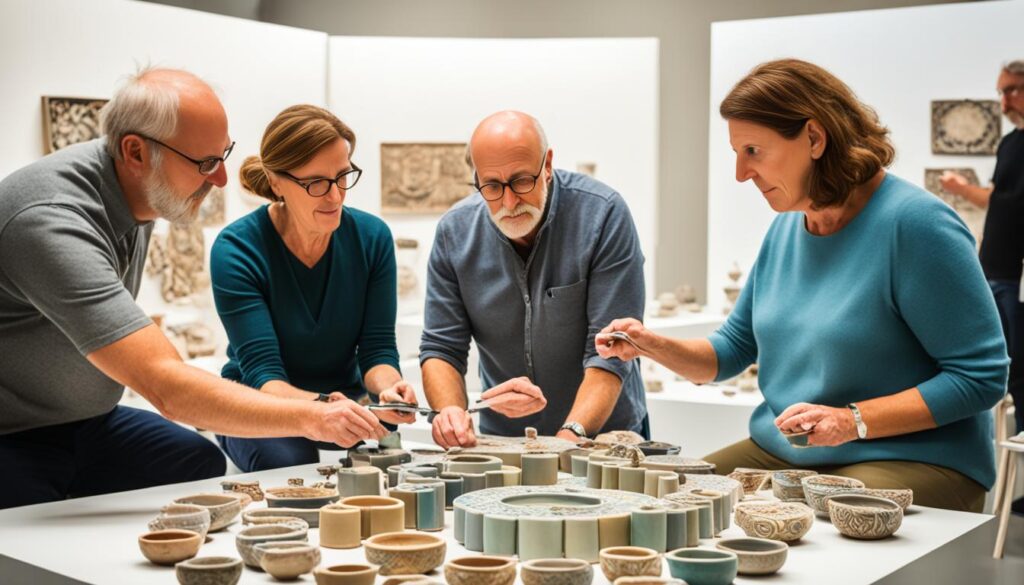
By employing these ceramic art evaluation criteria and enjoying comparative analysis, you will not only develop a keen eye for detail but also foster a deeper appreciation for ceramic art as a cultural and expressive medium.
Methods for Interpreting Ceramic Sculptures
Interpreting ceramic sculptures involves delving into the intricate layers of meaning embedded in each piece. The context surrounding the sculpture plays a crucial role in how you can authentically understand and appreciate it. The cultural and historical background of a ceramic sculpture significantly influences its interpretation.
The Role of Context in Interpretation
When interpreting ceramic sculptures, consider the cultural significance that informs the artist’s intentions. Understanding the societal and historical connections can enhance your interpretation. For instance, a piece may reflect traditional craftsmanship or modern techniques unique to different cultures. Recognizing these elements allows you to appreciate works that bridge gaps between Eastern and Western aesthetics, offering insights into the shared expressions of human experience.
Analyzing Technique and Form
Engaging in analyzing technique and form is essential to a comprehensive understanding of ceramic sculptures. Techniques such as firing methods and glazing processes greatly affect the final appearance and meaning of the sculptures. Different materials bring varied physical properties into play, shaping the relationship between the viewer and the artwork. By focusing on these aspects, you can uncover the deeper emotional connections and artistic expressions that might transcend cultural barriers and personal narratives, such as those described by artists influenced by their life experiences.
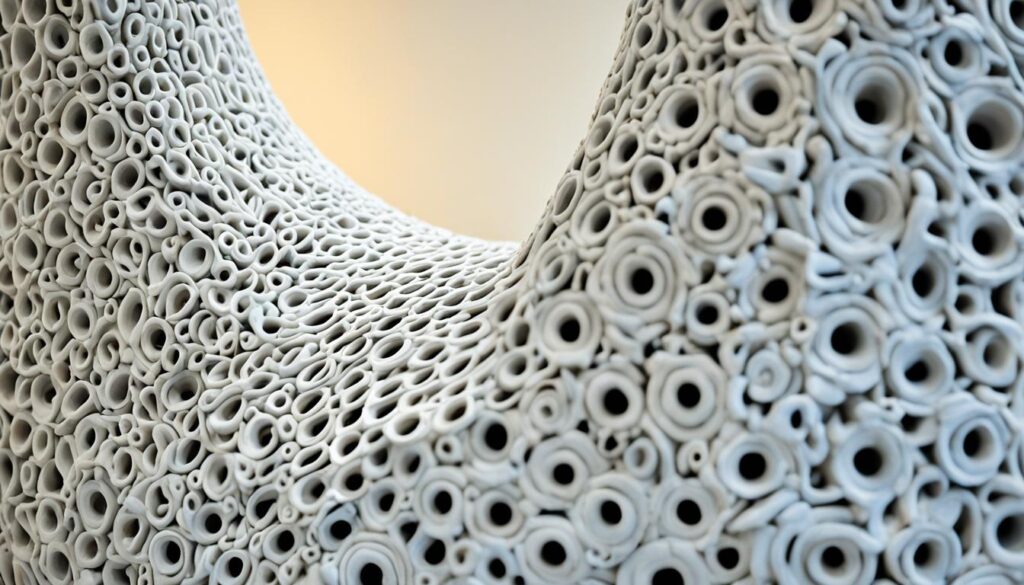
Writing Techniques for Ceramic Art Criticism
When diving into the realm of ceramic art criticism, you need to establish a compelling voice that resonates with your audience. This unique voice adds authenticity to your work, making your critiques more engaging and insightful. Understanding effective writing techniques for ceramic art allows you to convey your observations with clarity and passion.
Establishing Your Voice in Art Critique
Developing a personal and authoritative voice enhances your ability to critique ceramic art. Consider focusing on the following aspects:
- Natural Expression: Write in a manner that feels true to yourself. Authenticity fosters trust with your readers.
- Contextual Understanding: Showcase your knowledge of the history and techniques behind the pieces you critique. This enriches your perspective.
- Engaging Style: Engage your audience through thoughtful pacing and varied sentence structures. This keeps the reader invested in your critique.
Using Descriptive Language in Art Descriptions
Descriptive language elevates your critiques by vividly bringing ceramic pieces to life. Incorporating rich terms allows readers to visualize the artwork in their minds. Focus on these strategies:
- Specificity: Use precise language that describes colors, textures, and shapes. Phrases like “deep azure glaze” or “rough-hewn surface” provide clear imagery.
- Emotion and Sensation: Connect the emotional impact of the artwork to your descriptions. Share how a piece makes you feel and why.
- Evocative Comparisons: Compare the ceramics to familiar objects or experiences. This helps the audience relate to your words easily.
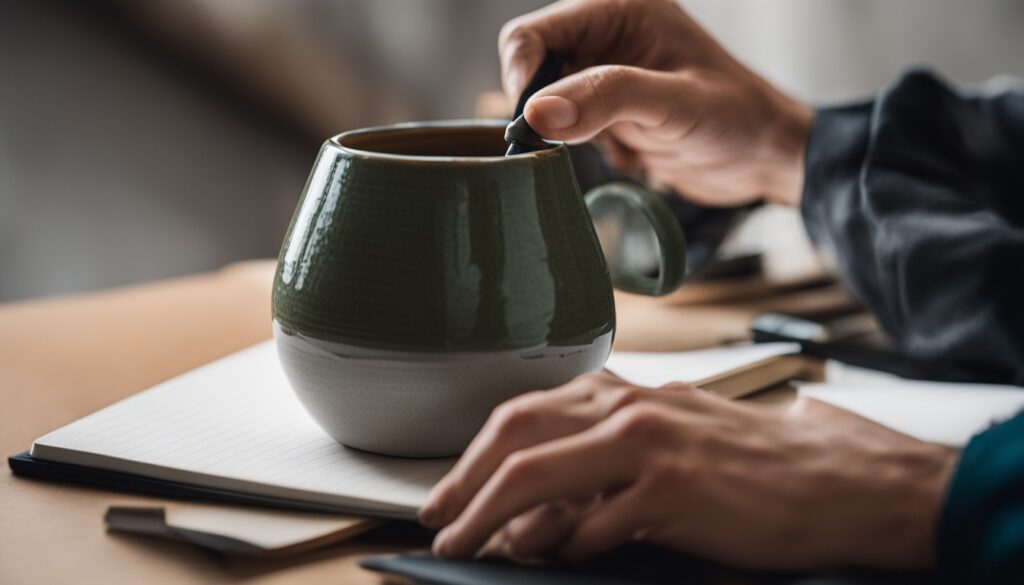
Critiquing Ceramic Pieces with Depth
When engaging in critiquing ceramic pieces, the goal is to provide insights that resonate with your audience. This involves not only an examination of the artwork itself but also a thoughtful engagement with its cultural context. By emphasizing the viewer’s experience, you create a more enriching critique.
Engaging the Viewer in Your Critique
To effectively engage the viewer, consider incorporating questions that provoke thought and exploration. Here are some strategies:
- Invite analysis: Ask questions about the forms, colors, and textures present in the ceramic work.
- Encourage personal connections: Suggest how the artwork might relate to viewers’ own experiences or perceptions.
- Promote interaction: Encourage viewers to look closely at specific features, such as the balance of shapes and colors used.
Incorporating Historical Perspectives in Your Analysis
Integrating historical perspectives in analysis provides deeper context for your critique. Understanding the traditions and evolution of ceramic art allows you to present your observations with a richer backdrop. Relevant philosophical insights, such as those proposed by Martin Heidegger and Susanne Langer, can enrich your interpretations by framing ceramics as both functional objects and artistic expressions.
Incorporate the following elements into your critique to enhance historical context:
- Contextual background: Provide a brief overview of the historical influences on ceramic styles and techniques.
- Artist intent: Explore the motivations behind the artwork’s creation and how they relate to its historical significance.
- Comparative analysis: Compare the work to other ceramics from different periods or cultures to highlight its uniqueness.
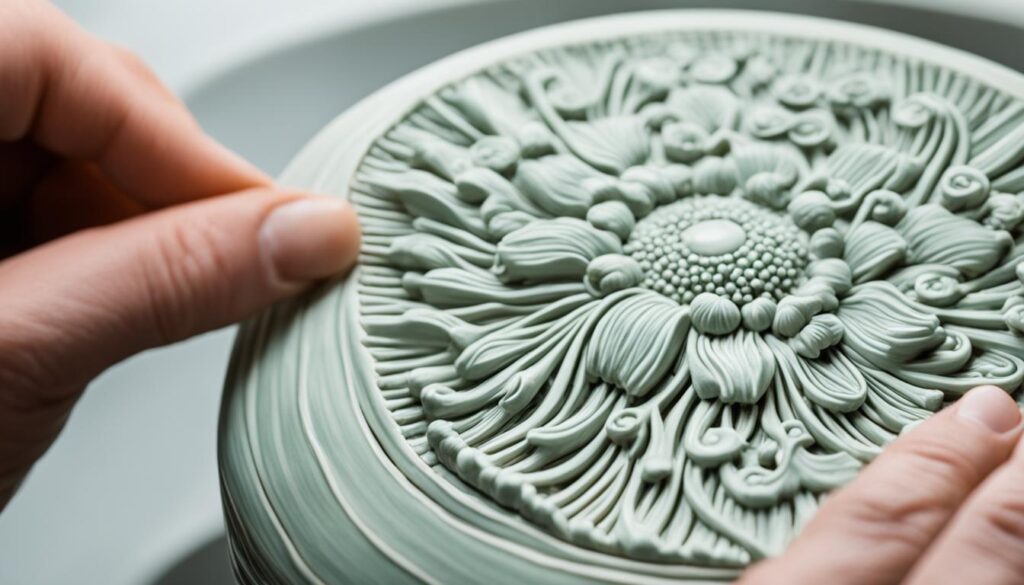
With this enriched approach, critiques transform into engaging narratives that invite viewers to appreciate the depth and intricacy of ceramic art. Observing statistical insights, such as the breakdown of subjects in artworks or the distribution of media used, offers tangible data that can support your arguments and observations.
| Artwork Element | Statistics |
|---|---|
| Types of objects | People (25%), Buildings (15%), Boats (10%), Landscape (20%), Seascape (10%), Animals (5%), Plants (10%), Water (5%), Food (5%) |
| Media used | Paint (60%), Clay (15%), Stone (5%), Found objects (10%), Wood (5%), Papier-mache (5%) |
| Types of lines | Sharp (20%), Curved (30%), Vertical (10%), Diagonal (15%), Zigzag (5%), Other (20%) |
| Shapes identified | Circles (25%), Squares (20%), Triangles (15%), Rectangles (10%), Diamonds (5%), Other (25%) |
| Color analysis | Bright colors (30%), Dark/Light values (25%), Neutral colors (20%), Warm colors (15%), Cool colors (10%) |
| Texture assessment | Rough (30%), Smooth (25%), Soft (15%), Hard (10%), Bumpy (5%), Other (15%) |
| Space perception | Deep space (40%), Shallow space (30%), Flat space (30%) |
| Balance | Asymmetrical balance (40%), Symmetrical balance (25%), Radial balance (15%), Unbalanced (20%) |
| Analysis of repetition | Lines (20%), Shapes (25%), Colors (15%), Light/Dark values (20%), Textures (20%) |
| Purposes of art | Expressive (25%), Narrative (20%), Decorative (15%), Persuasive (10%), Formalist (10%), Reflecting the world (10%), Ceremonial (10%) |
Appreciating Ceramic Forms and Techniques
Understanding the nuances of ceramic artistry can enhance your appreciation of ceramic forms and techniques. As you delve into the world of traditional vs. modern ceramics, you’ll discover how diverse approaches influence both aesthetics and functionality.
Understanding Traditional vs. Modern Ceramics
Throughout history, ceramic arts have evolved significantly across various cultures. Traditional ceramics often draw from centuries-old techniques, reflecting the artistic expressions of civilizations. For instance, the Egyptian pinching method and Neolithic Jōmon coil construction exemplify enduring craftsmanship that shaped early pottery.
In contrast, modern ceramics leverage innovation and experimentation. Contemporary artists explore new materials and methods while maintaining a dialogue with ancestral techniques. This juxtaposition fosters a richer understanding of how appreciating ceramic forms and techniques can connect the past with the present. The evolution of styles marks a fascinating journey, showcasing both the resilience of ancient practices and the creativity found in today’s artistic expressions.
Exploring Texture and Material Variations
Texture and material play a critical role in the sensory experience of ceramic artworks. Variation in firing methods, whether in the presence of oxygen or not, produces unique glazes and colors that captivate the observer. The thickness of an object’s lip can significantly impact the tactile experience, enhancing the connection between the user and the piece.
Artists like Kristina Riska, who utilize coiling techniques, emphasize the textural qualities that reflect an intimate understanding of materials. The interplay of texture can evoke emotional responses, inviting viewers to engage more deeply with the object. Whether you lean towards traditional techniques or embrace modern innovations, there is much to explore in the fascinating textures and material variations that ceramics offer.
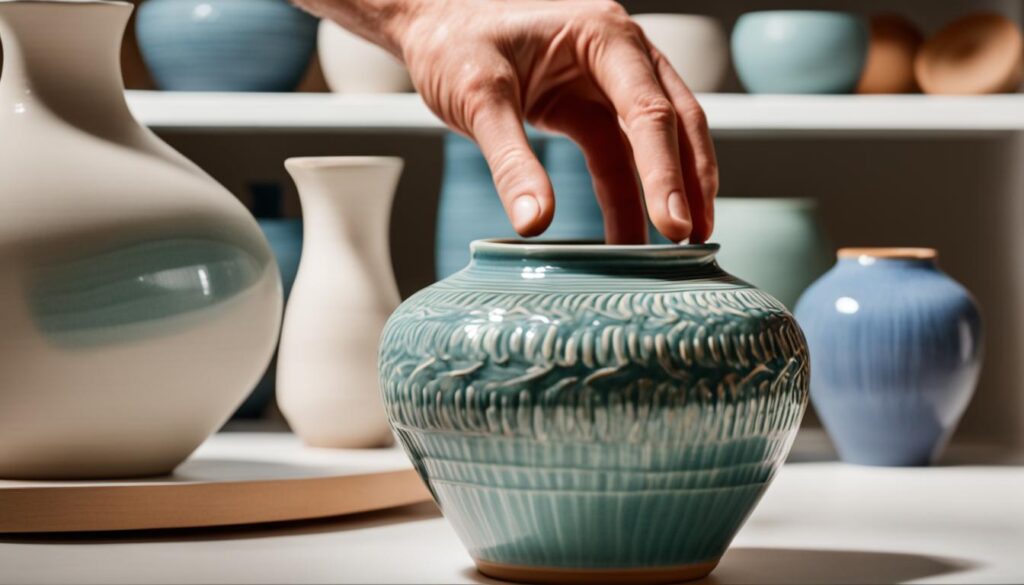
| Technique | Period | Notable Characteristics |
|---|---|---|
| Pinching | Predynastic Period, c. 3500–3400 B.C. | Creation of vessels and figures through finger manipulation. |
| Coiling | Jōmon Period, ca. 10,500–300 B.C. | Layering of coils to form pots, emphasizing texture. |
| Slab Construction | Mesopotamian, ca. 14,000 B.C. | Use of flat slabs to build structured forms, allowing for intricate designs. |
| Modern Techniques | Contemporary | Incorporation of innovative materials and firing methods. |
The Benefits of Writing Ceramic Art Reviews
Engaging in ceramic art review writing offers numerous advantages that extend beyond personal reflection. Your experience in writing nurtures your ability to critically observe and analyze art. By doing so, you significantly enhance your visual literacy, allowing for deeper and more meaningful interactions with ceramic pieces. This skill set not only benefits you but also enriches the broader community of ceramic art enthusiasts.
Enhancing Your Visual Literacy through Writing
By examining the details of ceramic artworks, you cultivate a sharper eye for nuances in texture, color, and form. This heightened observation skill provides a pathway to greater appreciation of artistic techniques and traditions. When you articulate your thoughts through ceramic art review writing, you develop a language that captures the intricacies of each piece, inviting others to engage on a deeper level.
Building a Community of Ceramic Art Enthusiasts
As you share your critiques, you contribute to a thriving community passionate about ceramics. Your insights can inspire dialogue and collaboration among artists and collectors alike. In this nurturing environment, peer feedback emerges, enriching everyone’s understanding of ceramic art. Together, you foster a climate where appreciation for ceramics flourishes, connecting individuals across diverse backgrounds and experiences.

Conclusion
As you reflect on the journey of writing art appreciation in ceramics, it becomes clear that understanding this art form is both rewarding and enriching. The techniques discussed throughout this guide serve as valuable tools for crafting your critiques, enabling you to engage with the beauty and complexity inherent in ceramic artworks. By honing your skills in art critique, you not only enhance your visual literacy but also contribute to a vibrant community of ceramic enthusiasts.
Engaging with ceramic art promotes critical thinking, creativity, and cultural awareness. Statistics reveal that students involved in ceramic arts education experience a boost in problem-solving skills by as much as 30%, alongside a significant 40% increase in self-expression through original creations. Such insights reflect the profound benefits that come from appreciating and critiquing ceramics, fostering a deeper understanding of diverse cultures and techniques.
Ultimately, embracing the principles of writing art appreciation in ceramics will empower you to convey your unique perspective and celebrate the artistry involved. Delve into this rich medium and apply the strategies outlined here as you continue to explore and critique, revealing the intricacies and nuances that make ceramic art a truly dynamic expression of creativity. These principles will also enhance your understanding and enjoyment of art appreciation activities centered around ceramics. By immersing yourself in this art form, you can develop a deeper appreciation for the techniques, materials, and cultural influences that shape ceramic art. Engaging in art appreciation activities will allow you to connect with others who share your passion and gain new insights into the diverse world of ceramic art.
